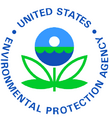Category:Thermal Pollution: Difference between revisions
Siterunner (talk | contribs) (Created page with "http://en.wikipedia.org/wiki/Thermal_pollution") |
Siterunner (talk | contribs) No edit summary |
||
| Line 1: | Line 1: | ||
http://en.wikipedia.org/wiki/Thermal_pollution | http://en.wikipedia.org/wiki/Thermal_pollution | ||
Industrial wastewater | |||
In the United States, about 75 to 82 percent of thermal pollution is generated by power plants. The remainder is from industrial sources such as petroleum refineries, pulp and paper mills, chemical plants, steel mills and smelters. | |||
○ | |||
Urban runoff | |||
During warm weather, urban runoff can have significant thermal impacts on small streams, as stormwater passes over hot parking lots, roads and sidewalks. Stormwater management facilities that absorb runoff or direct it into groundwater, such as bioretention systems and infiltration basins, can reduce these thermal effects. Retention basins (ponds) tend to be less effective at reducing temperature, as the water may be heated by the sun before being discharged to a receiving stream. | |||
○ | |||
https://en.wikipedia.org/wiki/Red_tide | |||
https://en.wikipedia.org/wiki/Algal_bloom | |||
The frequency and severity of harmful algal blooms (HABs) in some parts of the world have been linked to increased nutrient loading from human activities. In other areas, HABs are a predictable seasonal occurrence resulting from coastal upwelling, a natural result of the movement of certain ocean currents. The growth of marine phytoplankton (both non-toxic and toxic) is generally limited by the availability of nitrates and phosphates, which can be abundant in coastal upwelling zones as well as in agricultural run-off. The type of nitrates and phosphates available in the system are also a factor, since phytoplankton can grow at different rates depending on the relative abundance of these substances (e.g. ammonia, urea, nitrate ion). A variety of other nutrient sources can also play an important role in affecting algal bloom formation, including iron, silica or carbon. Coastal water pollution produced by humans (including iron fertilization) and systematic increase in sea water temperature have also been suggested as possible contributing factors in HABs. | |||
Harmful algal blooms have been observed to cause adverse effects to a wide variety of aquatic organisms, most notably marine mammals, sea turtles, seabirds and finfish. | |||
In the marine environment, single-celled, microscopic, plant-like organisms naturally occur in the well-lit surface layer of any body of water. These organisms, referred to as phytoplankton or microalgae, form the base of the food web upon which nearly all other marine organisms depend. Of the 5000+ species of marine phytoplankton that exist worldwide, about 2% are known to be harmful or toxic. Blooms of harmful algae can have large and varied impacts on marine ecosystems, depending on the species involved, the environment where they are found, and the mechanism by which they exert negative effects. | |||
HABs occur in many regions of the world, and in the United States are recurring phenomena in multiple geographical regions. | |||
Revision as of 17:36, 17 January 2016
http://en.wikipedia.org/wiki/Thermal_pollution
Industrial wastewater
In the United States, about 75 to 82 percent of thermal pollution is generated by power plants. The remainder is from industrial sources such as petroleum refineries, pulp and paper mills, chemical plants, steel mills and smelters.
○
Urban runoff
During warm weather, urban runoff can have significant thermal impacts on small streams, as stormwater passes over hot parking lots, roads and sidewalks. Stormwater management facilities that absorb runoff or direct it into groundwater, such as bioretention systems and infiltration basins, can reduce these thermal effects. Retention basins (ponds) tend to be less effective at reducing temperature, as the water may be heated by the sun before being discharged to a receiving stream.
○
https://en.wikipedia.org/wiki/Red_tide
https://en.wikipedia.org/wiki/Algal_bloom
The frequency and severity of harmful algal blooms (HABs) in some parts of the world have been linked to increased nutrient loading from human activities. In other areas, HABs are a predictable seasonal occurrence resulting from coastal upwelling, a natural result of the movement of certain ocean currents. The growth of marine phytoplankton (both non-toxic and toxic) is generally limited by the availability of nitrates and phosphates, which can be abundant in coastal upwelling zones as well as in agricultural run-off. The type of nitrates and phosphates available in the system are also a factor, since phytoplankton can grow at different rates depending on the relative abundance of these substances (e.g. ammonia, urea, nitrate ion). A variety of other nutrient sources can also play an important role in affecting algal bloom formation, including iron, silica or carbon. Coastal water pollution produced by humans (including iron fertilization) and systematic increase in sea water temperature have also been suggested as possible contributing factors in HABs.
Harmful algal blooms have been observed to cause adverse effects to a wide variety of aquatic organisms, most notably marine mammals, sea turtles, seabirds and finfish.
In the marine environment, single-celled, microscopic, plant-like organisms naturally occur in the well-lit surface layer of any body of water. These organisms, referred to as phytoplankton or microalgae, form the base of the food web upon which nearly all other marine organisms depend. Of the 5000+ species of marine phytoplankton that exist worldwide, about 2% are known to be harmful or toxic. Blooms of harmful algae can have large and varied impacts on marine ecosystems, depending on the species involved, the environment where they are found, and the mechanism by which they exert negative effects.
HABs occur in many regions of the world, and in the United States are recurring phenomena in multiple geographical regions.
Subcategories
This category has the following 2 subcategories, out of 2 total.
E
P
Media in category "Thermal Pollution"
The following 3 files are in this category, out of 3 total.
- Environmental Protection Agency logo.png 380 × 414; 39 KB
- EPA History Xin Liu-2010.pdf ; 2.88 MB
